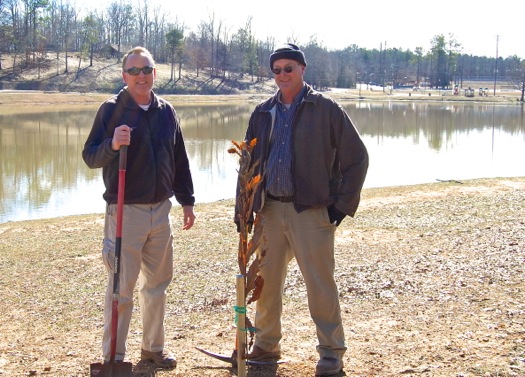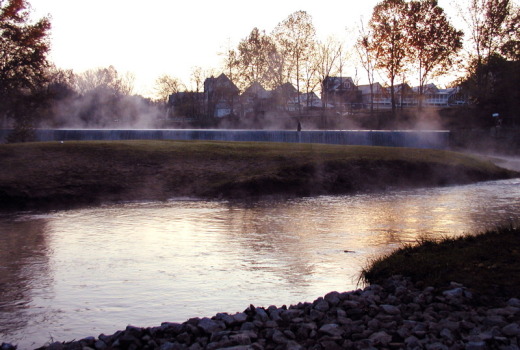Saving the American Chestnut Tree
 Saturday, January 17, 2015 at 8:00PM
Saturday, January 17, 2015 at 8:00PM Towering over 100 feet tall and with a diameter of up to 10 feet, the American chestnut tree, Castanea dentata, was known as the "Redwood of the East." At one time the American chestnut accounted for up to 25% of the forest canopy in the Eastern United States. It was a significant contributor to the rural economy, and it was an important part of the forest ecosystem. But who has seen one of these trees in the past quarter century? A deadly fungus, which probably hitchhiked to America on imported Asian chestnut trees, was first noted in a tree in 1904 at the Bronx zoo. Despite all efforts to control it, the disease quickly spread to defenseless American chestnut trees, and within 80 years only echoes of the great chestnut forests remained.
At one time the American chestnut accounted for up to 25% of the forest canopy in the Eastern United States. It was a significant contributor to the rural economy, and it was an important part of the forest ecosystem. But who has seen one of these trees in the past quarter century? A deadly fungus, which probably hitchhiked to America on imported Asian chestnut trees, was first noted in a tree in 1904 at the Bronx zoo. Despite all efforts to control it, the disease quickly spread to defenseless American chestnut trees, and within 80 years only echoes of the great chestnut forests remained.
There are four main species of chestnut trees: American, European, Japanese and Chinese. Only the American has succumbed to the chestnut blight. American chestnuts are said to be superior, with a sweeter taste, than Asian chestnuts, and American chestnut wood is highly resistant to rot and was a prized building material. 
 Chestnuts grow inside easily opened spiny shells.
Chestnuts grow inside easily opened spiny shells.
Asian chestnut trees, which are unaffected by the disease, are sometimes planted as a replacement, but these are much smaller trees, about the size of a mature apple tree. One can no longer buy chestnut lumber, and chestnuts for sale are either imported or come from non-native trees.
Despite its demise as a food and lumber source, the American chestnut is not extinct. Sprouts still emerge from old stumps, though they usually succumb to the disease before they mature. The American Chestnut Foundation is making efforts to restore the American chestnut by breeding a genetically diverse, blight-resistant American chestnut tree. One group of blight-resistant trees is 15/16 American Chestnut and 1/16 Chinese Chestnut. These trees are now being planted in test sites to determine their suitability.
Three of these American chestnut trees were recently planted in Joe Tucker Park in Helena, Alabama, by the owner of Myers Plants and Pottery, plantsman Stewart Myers; horticulturist Fred Kapp; and members of the Helena Beautification Board.
 Fred Kapp, on the left, and Stewart Myers stand by a newly-planted American chestnut tree.More American chestnut trees are being planted by this group in selected sites in our area. The hope is that these trees will grow and produce nuts, which people may pick up and plant, therefore helping to reintroduce this important tree to the landscape of the Eastern United States.
Fred Kapp, on the left, and Stewart Myers stand by a newly-planted American chestnut tree.More American chestnut trees are being planted by this group in selected sites in our area. The hope is that these trees will grow and produce nuts, which people may pick up and plant, therefore helping to reintroduce this important tree to the landscape of the Eastern United States.








